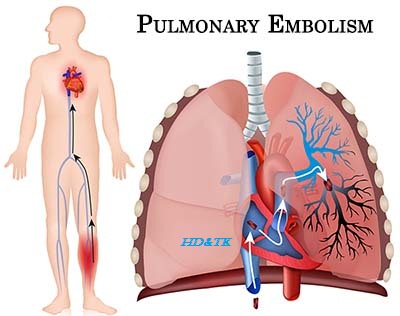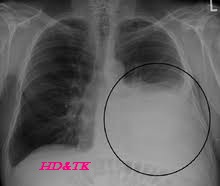Genetic Diseases
Scientists who study the
genetics of Alzheimer’s distinguish between “familial Alzheimer’s disease,”
which runs in families, and “sporadic Alzheimer’s disease”, where no obvious
inheritance pattern is seen. True familial Alzheimer’s disease accounts for
less than 5% of Alzheimer’s cases. Sporadic Alzheimer’s is much more common.
Familial
Alzheimer’s Disease
All Familial Alzheimer’s disease known so far has an early onset, and as many as 50 percent of the cases are now known to be caused by defects in three genes located on three different chromosomes, the structures inside cells that house the genetic code. Some families have mutations in a gene called amyloid precurser protein (APP), which causes an abnormal form of the amyloid protein to be produced. Other families have mutations in a gene called presenilin 1, which causes an abnormal presenilin 1 protein to be produced. Still others have mutations in a very similar gene called presenilin 2, which causes an abnormal presenilins 2 proteins to be produced.
All Familial Alzheimer’s disease known so far has an early onset, and as many as 50 percent of the cases are now known to be caused by defects in three genes located on three different chromosomes, the structures inside cells that house the genetic code. Some families have mutations in a gene called amyloid precurser protein (APP), which causes an abnormal form of the amyloid protein to be produced. Other families have mutations in a gene called presenilin 1, which causes an abnormal presenilin 1 protein to be produced. Still others have mutations in a very similar gene called presenilin 2, which causes an abnormal presenilins 2 proteins to be produced.
Even if one of these
mutations is present in only one of the two copies of a gene inherited from a
person’s parents, the person will inevitably develop that form of early-onset
Alzheimer’s (this is called autosomal dominant inheritance). However, the total
known number of these cases is small (between 100 and 200 worldwide), and there
is as yet no evidence that any of these mutations play a major role in the more
common, sporadic or non-familial form of late-onset Alzheimer’s. Scientists are
working to reveal the normal function of APP and presenilins and to determine
how mutations of these genes cause the onset of familial Alzheimer’s disease.
Sporadic
Alzheimer’s Disease
Although there is no evidence that autosomal dominant inheritance of mutated genes causes late-onset Alzheimer’s, genetics does appear to play a role in the development of this more common form of the disease. Research has found an increased risk for late-onset Alzheimer’s in people who inherit one or two copies of a particular variation of a gene called apolipoprotein E (APOE) — the variation known as APOE e4. Different variations, or alleles, of particular genes produce variations in inherited characteristics, such as eye color or blood type. In this case, the variations are in the APOE gene that directs the manufacture of apolipoprotein E, a protein that helps carry blood cholesterol throughout the body, among other functions. It is found in neurons and other supportive brain cells (called glia) of healthy brains, but it is also associated in excess amounts with the plaques found in the brains of people with Alzheimer’s.
Although there is no evidence that autosomal dominant inheritance of mutated genes causes late-onset Alzheimer’s, genetics does appear to play a role in the development of this more common form of the disease. Research has found an increased risk for late-onset Alzheimer’s in people who inherit one or two copies of a particular variation of a gene called apolipoprotein E (APOE) — the variation known as APOE e4. Different variations, or alleles, of particular genes produce variations in inherited characteristics, such as eye color or blood type. In this case, the variations are in the APOE gene that directs the manufacture of apolipoprotein E, a protein that helps carry blood cholesterol throughout the body, among other functions. It is found in neurons and other supportive brain cells (called glia) of healthy brains, but it is also associated in excess amounts with the plaques found in the brains of people with Alzheimer’s.
Researchers are
particularly interested in three common alleles of the APOE gene: e2, e3 and
e4. The finding that increased risk is linked with inheritance of the APOE e4
allele has helped explain some of the variations in age of onset of Alzheimer’s
disease based on whether people have inherited zero, one, or two copies of the
APOE e4 allele from their parents. The more APOE e4 alleles one inherits, the
lower the age of disease onset. The relatively rare APOE e2 allele may protect
some people against the disease: It seems to be associated with a lower risk
for Alzheimer’s and a later age of onset if the disease does develop. APOE e3
is the most common version found in the general population and may play a
neutral role in Alzheimer’s risk.
Does everyone who carries
the APOE gene develop Alzheimer’s disease?
The inheritance of one or two APOE e4 alleles does not predict Alzheimer’s with certainty. That means that, unlike early-onset familial Alzheimer’s disease, a person can have one or two APOE e4 alleles and still not get the disease, and a person who develops the disease may not have any APOE e4 alleles. APOE e4 increases the risk of developing Alzheimer’s, but it does not cause the disease. The ways in which APOE e4 increases the likelihood of developing Alzheimer’s are not known with certainty, but one possible mechanism is that it facilitates beta amyloid buildup in plaques and this contributes to lowering the age of onset of the disease. Other theories involve interactions with cholesterol levels and effects on nerve cell death that are independent of its effects on plaque buildup.
The inheritance of one or two APOE e4 alleles does not predict Alzheimer’s with certainty. That means that, unlike early-onset familial Alzheimer’s disease, a person can have one or two APOE e4 alleles and still not get the disease, and a person who develops the disease may not have any APOE e4 alleles. APOE e4 increases the risk of developing Alzheimer’s, but it does not cause the disease. The ways in which APOE e4 increases the likelihood of developing Alzheimer’s are not known with certainty, but one possible mechanism is that it facilitates beta amyloid buildup in plaques and this contributes to lowering the age of onset of the disease. Other theories involve interactions with cholesterol levels and effects on nerve cell death that are independent of its effects on plaque buildup.





Comments
Post a Comment